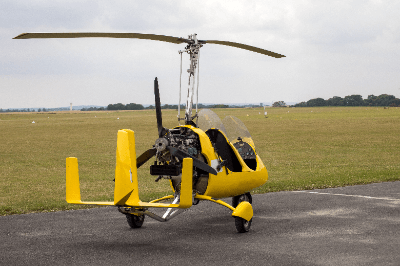What Is a Gyrocopter?

A Gyrocopter bears a striking resemblance to a helicopter, with rotors in place of fixed wings. Unlike helicopters, Gyrocopters do not have direct power to the rotors; they operate on a principle similar to a slowly descending dragonfly.
Unlike helicopters, which fly based on the lift generated from the rotation of the rotors powered by the engine, Gyrocopters rely on the principle of a dragonfly descending slowly.
The required takeoff distance is between 5 to 30 meters, and during landing, a runway of 5 to 0 meters is necessary. Due to their slow speed, they are not suitable for mass transportation and are primarily used for sports and recreational purposes.
In Japan, there are currently around 200 registered Gyrocopters, and assembly and maintenance are typically carried out by the owners under guidance. They fall into the category of “self-made aircraft” built from plans or kits.
Uses of Gyrocopter
Gyrocopters have a simple structure, different from helicopters, with models in Europe featuring cabins designed for comfort, including ventilation and heating, and being utilized for business travel.
In addition to unmatched maneuverability and stable flight performance even in rough weather conditions, Gyrocopters exhibit capabilities such as adapting to temperatures as low as -25℃ and are employed in lifesaving missions.
Furthermore, Gyrocopters find applications in various fields such as police work, agriculture, environmental surveys, wildlife poaching monitoring, aerial photography, and other professional activities tailored to specific needs.
In recent years, the development of small lithium-ion batteries has led to the creation of lighter and quieter Gyrocopters.